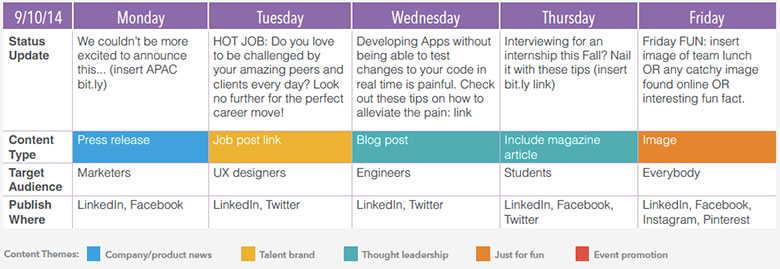It appeared to me that writing content is similar to how television producers create TV content.
Brainstorm
Being a musician, the brainstorm concept was easiest for me to grasp. I literally have 2-3 pen pads that have ideas for writing concepts in marketing. Some of these ideas I am proud of and some of them are best left in a notepad buried deep amongst other note pads. My approach to brainstorming has always involved outside the box thinking with one foot in the box for practicality. Being memorable is great but if it's not related to your brand, it doesn't help It's so easy to take other blog posts and recopy them. I try very hard to not do that and find writing concepts that are relevant and (hopefully) fresh.
Outline
I started to research some of my favorite blog writers and see how they were keeping track of all this content they produced. I noticed a lot of them utilize outlines to keep their ideas focused and concise. I hadn't used outlines since college writing but it's still very pertinent in content production. It takes a lot of discipline but after about 10 posts, I was able to get to my work flow quickly with constructing outlines. Here is my normal framework:
- Main Title (I usually change this after finishing my post)
- Subject ( I usually have 3-5 themes I discuss in my writing)
- Introduction (two or three sentences to help me narrow my focus on the subject matter)
- Purpose (I think to myself, "Why should you read this content?")
- Main points (I take 3-7 of my main points that sum up within)
- Conclusion (How I want to create a lasting impression for people to read)
This really shouldn't exceed past a page but it really does help you organize writing your content.
Content Calendar

When I began writing my blog, I wrote about 13-17 posts ahead of time. My main reason doing this was I have a 9-5 job and still wanted to maintain a consistency in writing. When I was finally finished writing those posts, I didn't know how I would organize everything. I noticed a lot content marketers utilizing calendars to keep track metric wise or what day they write certain posts. I've happen to come across some extremely technical content calendars so I had went with a more streamlined easy to digest approach. The image above is one of my favorite looking calendars. A major benefit of using a content calendar is it improves your ability to write on certain subjects that may be a hot topic during a specific time period.
example... If your start up consists of online shopping, writing articles around Christmas and holidays may be crucial to increase your presence.
Erase what's not good
When I write a lot of content, I had to remove the fear of losing bad content. Is it better to have 20 great useful posts or is it better to have 60 posts? This is the question I ask myself when creating content. Professional content marketers create audits to track what's useful and what needs to be disregarded. This also helps from an SEO standpoint as certain articles may be useful to use again. The content audit really helps organize and prioritize effective posts. It's OK to use a theme and re-purpose the content if it was successful. It's not cheating if you take that same post and update it with added value to maintain its freshness. Like me, don't be afraid to get rid of content that's just frankly, not good at all.
Effective content marketing is about publishing systems-not waiting on creative inspiration. - Ben Stroup
No comments:
Post a Comment